Science concepts: vectors, torque, Newton’s 2nd and 3rd laws of motion, static structures
Striking is a quintessential part of most martial arts. Different martial arts strike differently. Knife hand chops, ridge hand strikes, hammer fist strikes, backhands, punches, kicks, elbows, knees, head butts…the list goes on. There are seemingly many kinds of strikes, but they really only boil down to a handful of different categories. As Hock Hochheim says, “a strike is either going to be straight or curving and either committed or hit-and-retract.” Here, I’m only concerned with the actual structure of the attack. So, I’m not going to worry about whether a strike is committed or non-committed.
For any strike to be effective, you need the correct structure. Otherwise, some of your effort is wasted. There are quite of a few scientific concepts involved here. So, let’s dive in.
The Science
Punching is what most people are familiar with. So I’ll use a straight punch and a hook punch as my examples, but know that the same principles apply to kicks. Elbows and knees work on the same principles too, and they’re even easier to apply because there are fewer joints involved.
The Straight Punch
Let’s start from the business end of the punch: the knuckles. How should the knuckles make contact with the target? Having already covered vectors, I’ll bet you can make a good guess. As with many problems involving vectors, we define our axes first.
Here, the axis that is parallel to surface of the contact point is the “wasted” axis (red axis), and the axis that is perpendicular to the surface of the contact point is the “useful” axis (green axis). Now, break the vector of the incoming fist’s motion (blue vector) into components along these axes (red and green components…take note of my superbly mediocre mspaint skills). Hopefully, the axis names make the point for me here. Any motion that is parallel to the surface is wasted. This kind of motion is what produces strikes that glance off of the target. Only the perpendicular motion affects the target. So, this is our first structural insight: hit perpendicular to the surface for maximum effect.
When that perfectly landed punch makes contact, the target impedes the motion of the fist. This is a phenomenon described by Newton’s 3rd law of motion, which states that for every action there is an equal but opposite reaction. Informally, the target pushes back on the fist. Where does that force go? That depends on your structure. Let’s now focus on the next joint in this chain of effects, the wrist. Just like the knuckles ran into the face, the forearm runs into the hand. We can do the same thing that we did early, define our axes, break the incoming vector into components, and see how much is useful and how much is wasted.
We see in the first picture, that some of the incoming force is wasted. Actually, it’s worse than wasted. It’s harmful.
I had mostly done Taekwondo as my primary martial art all the way through college. After college, my roommate and I got a punching bag, the kind that has a plastic stand that you fill with water. I had spent years kicking and punching the air and always pulling my strikes when sparring because control was paramount. I was excited to finally get to hit something and see what kind of damage I could do. We filled it up with water and I started hitting full force. Kick, kick, kick, punch……..ow! For the first time ever, I punched something as hard as I could. At that speed and force, any little structural flaw was going to be felt in a big way. Like the picture above, my wrist was bent down, ever so slightly, but that meant that the force from my forearm didn’t transfer into my hand. It sent my forearm past my hand, but my knuckles were firmly planted on the bag. Therefore…sprained wrist. It’s not a mistake I’ve made twice. Lesson learned: align your forearm bones with your hand bones.
This principle applies all the way up the arm. Keep things in line if you want the force to transfer properly. This is also the reason that martial arts instructors will tell students to extend their arms when doing straight punches because it puts the strain on the bones rather than the muscles, which might give way.
This is all well and good, but the astute observer will note that the force transfer doesn’t stop at the shoulder. It has to gosomewhere. Well, it wants to take your shoulder straight back. To prevent this from happening, we use our core muscles. This is where all the linear force gets converted, at least partially, into torque. I say “partially” because it depends on the angle of your spine relative to direction of the punch. If you were leaning forward a bit, then some of the force transfers straight down the spine and the rest of it tries to torque the spine backwards.
 |
| Light blue is linear force transfer; Yellow is linear force that is converted to torque (about the hips). |
The abs and other core muscles counter that torque (orange) to keep your torso from rotating backwards. As long as the torque provided by the abs is equal to the torque resulting from the punch’s linear force, the torso will remain steady. It should be noted that the longer the torso, the more torque necessary to balance this out. Tall guys, beware.
But we’re still not done. Remember Newton’s 3rd law. If the abdominal muscles are torquing the torso forward, what are they basing off of to apply that torque? And where does that linear force that went straight down the spine go? The answer to both of these is “the legs”. Now, just like the arms, if the structure is right, then the force gets transferred through the bones. If not, then the muscles have to apply torque to make sure that you don’t fall over.
 |
| In this stance, I’d have to apply virtually all of the torque with my toes to counteract the force of the punch. The idea is so ridiculous that I can’t even keep a straight face for the picture. |
Where does the buck stop? In the ground. The foot does the final transfer of linear force and torque into the ground, and the massive size of the planet takes care of the rest. I may have covered the structure of the punch from fist to foot, but the punch is produced in the opposite way. The power or base of the punch comes from the ground. If you have a good structure that transfers the reaction force from the contact back into the ground, then you’re not going to buckle. His face will.
This is another key point: ultimately, you want your punch to come from the ground.
The Hook Punch
There are actually a lot of variations on hook punches for various situations, but I’m going to cover the one that allows for the greatest bone structure involvement. Just like the straight punch, you want to make contact perpendicular to the surface. Similarly, you still need your forearm and wrist aligned to minimize the amount of forearm muscles you need to use to stop yourself from spraining your wrist, like me. For those things to be true, your knuckles, wrist, and elbow need to be lined up. The elbow is what pushes the fist into the target.
 |
| Blue is the applied force (note the alignment). Yellow represents the consequential torque. Orange, again, represents the counter-torque. |
This is where things get different from the straight punch. At this point, it’s all about torque, which is going to come from the muscles. The amount that the elbow is bent is very important. If the elbow is fairly extended, then the bicep needs to supply enough torque to transfer the force into the fist without the elbow buckling under the impact. If the elbow is too bent, then we lose velocity, the ability for the elbow to push the fist, and the tricep muscle needs to engage to prevent the elbow from buckling under the impact. To avoid these two extremes, go to the middle with a perfect 90 degree bend. (NOTE: I am not claiming that hook punches done without this 90 degree bend will not be effective. I’m just making a claim about ideal bone alignment for transferring force. If having to engage your bicep is worth it to you to gain some range on your hook, then by all means swing for the fences. Just be aware of the trade off.)
This makes things easy on the arm muscles, but just like the force in the last example, the torque has to go somewhere. The pectoral muscles end up being next in line. This isn’t so bad since it’s a very large muscle, comparatively speaking. This means that the torso now feels the torque, and just like the last example, the torque ultimately ends up in the feet and the ground. The reaction force goes to the elbow and converts to torque (because of the 90 degree angle). That torque is applied to the shoulder via the humerus. The shoulder and chest muscles counter that torque, which then results in a torque in the hips that also need to be countered. The feet counter that torque and the ground takes it from there.
Having good contact with the ground is essential. Imagine doing a hook punch on someone while you’re standing on ice or while wearing roller skates. The punch would end up rotating your body rather that transferring all of that motion into the target.
The Other Side
Knowing the proper structure to deliver a strike has another benefit. It allows you to notice when your opponent doesn’t have proper structure for absorbing a strike. The phrase “caught on your heels” is used in boxing to describe a structure that is leaning back rather than sinking down and forward. If you’re leaning back, then there’s no way to absorb an incoming strike. You just take it and get knocked over. We don’t want to be receiving a strike in that situation, but we definitely want to be delivering one if the other guy is in that situation. Watch for poor structure in your opponents to determine the best time to deliver a strike. In another post, I’ll cover how to produce poor structure in your opponents.
Structure Tip
Some of you may have seen or heard of the “sun fist” (not to be confused with Sunkist).
 |
| Good for punching |
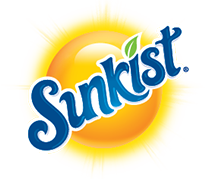 |
| Good for thirst quenching Also, “it’s different because of the spelling” (Eddie Izzard) |
(Actually, there is not a nice one-to-one relationship between the name “sun fist” and my intention illustrated here. If you call this something else, then just assume that’s what I meant and don’t get hung up on nomenclature.) I saw someone do this in a class I was teaching and tried to correct him because I thought he was doing a less extreme version of this:
He then had me make a fist and said he would try to bend my wrist and that I was to prevent him from doing so. He was able to bend it fairly easily. Then he had me make a sun fist and repeat the exercise. He couldn’t bend my wrist this time. It wasn’t just that he wasn’t trying as hard either. I actually felt the structural difference. It felt stronger. To confirm, I repeated the exercise with several other people. This time, I was the one trying to bend the wrist. Sure enough, the sun fist was stronger. It almost seemed like magic. Seeing as how I wasn’t prone to believing about the mystical and mysterious aspects of martial arts, I spent a fair chunk of the rest of the class analyzing my hand. Then I realized why the sun fist was working. Luckily, my hands are fairly lean, which revealed the essential anatomy. It turns out that the sun fist, by positioning the thumb knuckle (the one by the web of the hand) up closer to the back of the hand, allowed for an additional tendon to tighten and provide support. In particular, the extensor pollicis longus tendon.
This made me happy because it meant that I didn’t have to tuck my thumb in, which I still didn’t like, even though it’s only slightly in the sun fist. I just position my thumb alongside my index finger and flex that tendon.
 |
| The thumb is pressed up against the index finger. Note you can really see the flex of the extensor pollicus longus tendon here. |
If only I’d known this before I sprained my wrist! This little tip will allow the force of your punches to transfer through your knuckles better and avoid bending your wrist. I believe this is the secret to the attribute known in MMA as “heavy hands”. Sure, some guys just have meatier hands, but the weight difference is actually quite minuscule. The ability to punch with good structure is a much bigger factor than a couple of ounces of weight difference.
Conclusion
By applying this knowledge, you could really punch in just about any wacky way you want as long as your structure can transfer the force of the punch into the target. This knowledge should also affect how you hit various targets. The head can be a tricky target. Getting that perpendicular shot can be difficult when your opponent is bobbing, weaving, and shuffling around. Knowing what it takes to make a good punch (and a bad one!), you can choose at the last moment whether or not to follow through or pull back to avoid injuring yourself. Traditional martial artists are always talking about having good structure and stances, and they’re right. Though the set of good stances is much bigger than most people realize and it changes with the situation. Learn to feel your way through good structure and you’ll do well.
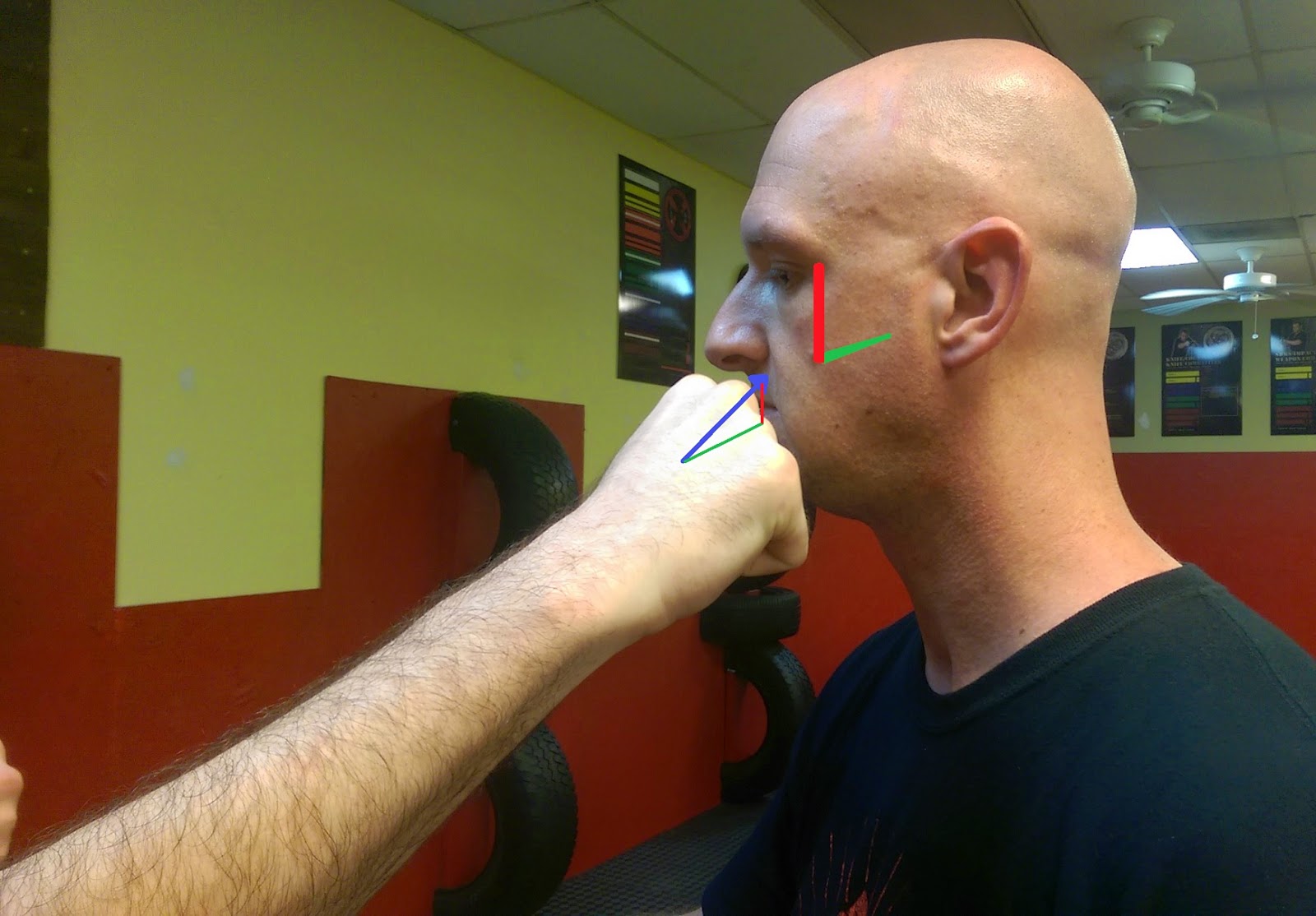
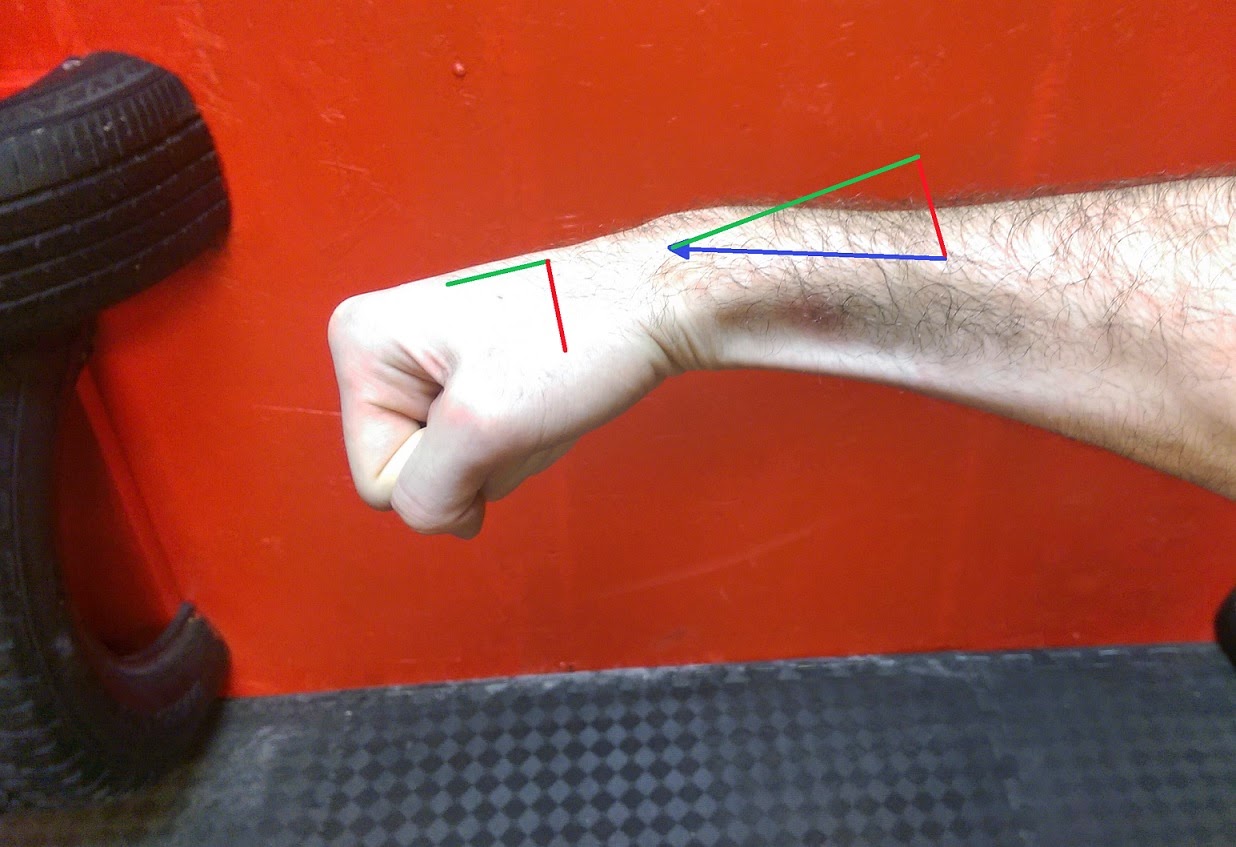


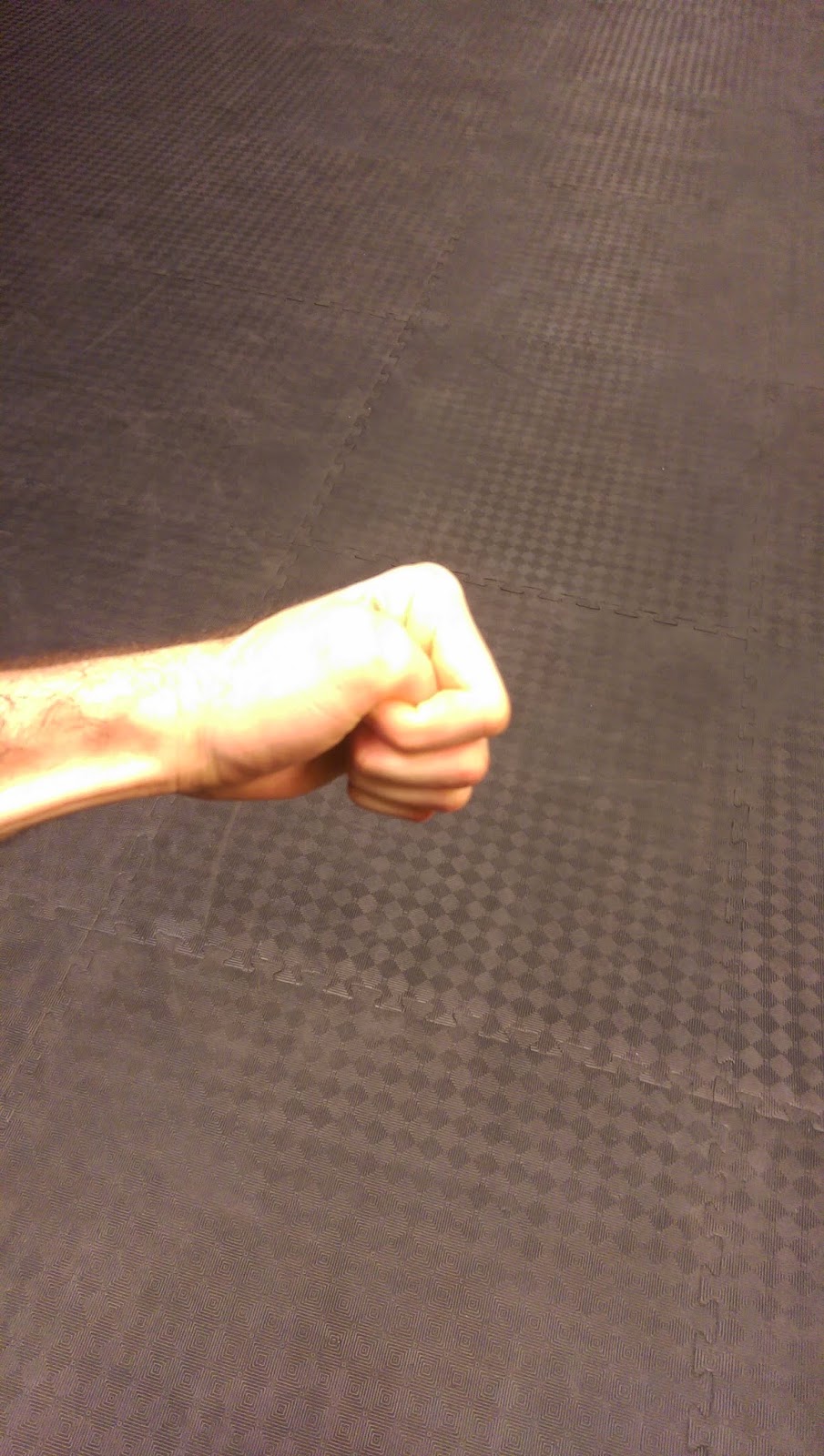
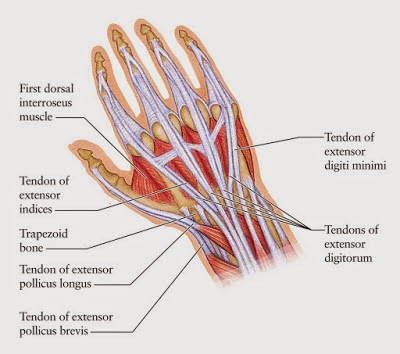
2 comments